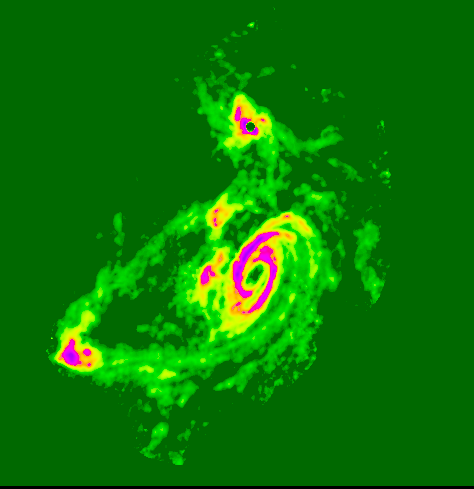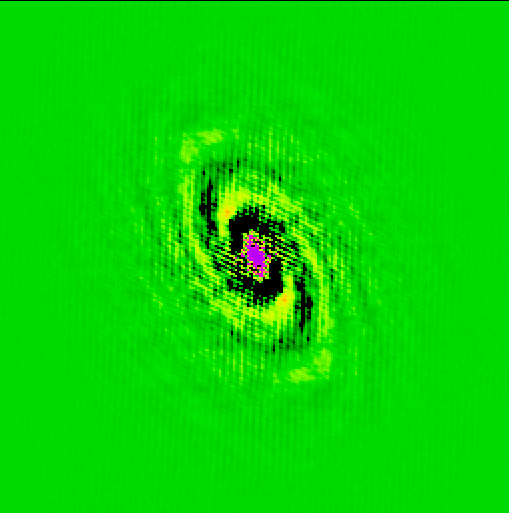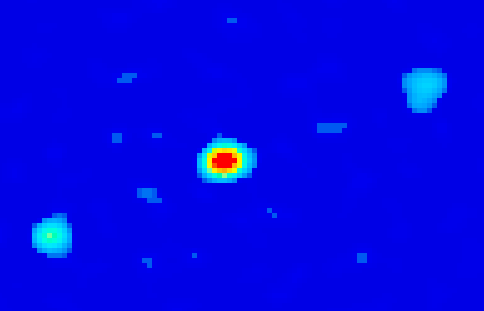
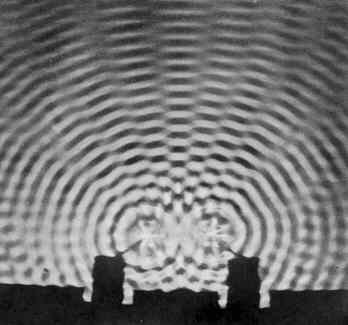
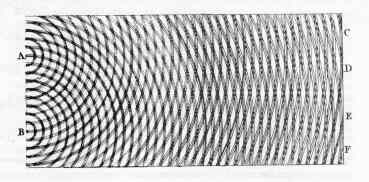


| The 109 GHz continuum image of Cygnus-A from OVRO millimeter array. |
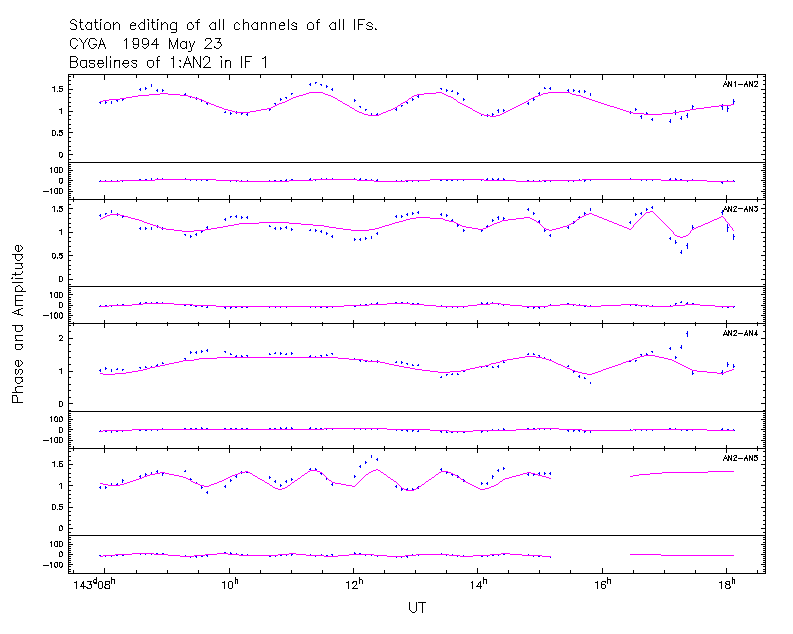
| The visibility plot for AN2. Blue dots are the actual measured amplitude and phase from the interferometer while the red line is the model visibility derived from the image shown above. |
